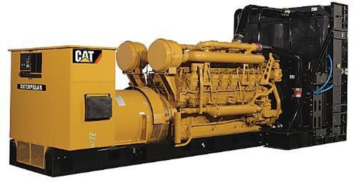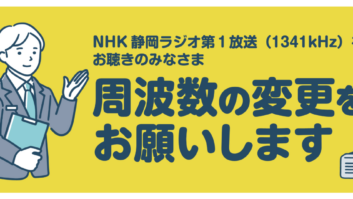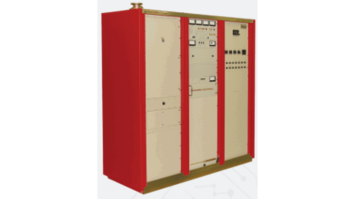This week Radio World is featuring highlights of our 2021 ebooks. This article appeared in “Mission-Critical: Maintaining Your Transmitter Site.”
 One hundred years is an impressive lifespan not just for any human but for any American industry.
One hundred years is an impressive lifespan not just for any human but for any American industry.
The modern radio business has crossed that demarcation and, for us broadcast technocrats, it’s a moment of self-celebration, as our industry remains dependent on the technology that we supply.
In its first years, radio was so novel that it needed an understandable simile. Radio was like a newspaper without paper. It was like a town crier, delivering an abundance of useful information, interesting voices and sounds through the ether to everyone, everywhere.
To continue the romantic analogy, the voice of that crier is our transmitter, arguably the most important element in any station’s success story.
Like a lover, we want our transmitter to be reliable, durable and faithful.
But little useful or good happens in life by accident. Achieving high performance and trouble-free transmitter operation takes a thoughtful, attentive design and maintenance program.
Good engineering practice (GEP) in any discipline usually is a function of refinement. A century allows a long journey of refinement, inculcating a plethora of detailed methodology and techniques, culminating in a distilled corpus of best practices.
[Check Out More of Radio World’s Ebooks Here]
Let’s start at the beginning.
What does a transmitter do but take electric power and turn it into radio? Like baking a cake, bad components usually make a bad cake. Similarly, poor electric power makes for bad transmissions.
Let’s discuss power and best practices to achieve the goal of “perfect” power utilization.
Power to any broadcast installation can be divided into two universes, hard and soft. The former is supplied by a commercial utility, usually regulated by the government; the latter is generated locally and can come from a variety of sources.
Hard power
Gather and have ready access to all details concerning your electric supply. If power is lost, having information at hand will help you get your power back much more quickly.
The list includes direct phone numbers to the trouble section of your utility; your account numbers; whose name is on the account; the exact service address; your meter number; the format of your supply (e.g. 480 volt 3 phase in wye); who else might be on your supply (e.g. the two cell operators on your tower) and on common poles and transformer; the pole numbers; your priority position for restoration; the phone numbers of other site users so you can coordinate your complaints and requests, etc.
- Be aware of your power system. Inspect and review it routinely. Remove temporary connections and attachments soonest. Address points of failure and eliminate potential safety issues.
- One of my confreres tells a story of arriving to work on a hop system at a large common tower site. Looking around for a place to plug in his drill, he was told not to unplug a particular extension cord that ran from his hop equipment closet, out the door, through the hallway, into another station’s transmitter room, where STL equipment was plugged into this line.
- Seems they’d run out of outlets and this was the most convenient location to plug in — a point of failure for both users.
- Maintain your power system. Since your transmitter system will be on hard power 99.9% of the time, check at least annually for hot spots, especially around suspect locations including terminations in circuit breaker panels, on the CBs as well as on neutral and ground bar screws.
- Review grounding. Whenever you are inside your electrical system, review the wiring arrangements and take amprobe measurements such that the separation of neutral and ground paths are maintained.
- Our mantra is that current should flow in the neutral, no current should be flowing on the grounding paths. The last place where ground and neutral are common is most often in the main breaker panel or main metering where neutral is firmly bonded to (earth) ground. After this selected point, they must be kept separate.
- At least three ground systems should exist at every transmitter site, for power, signal and lightning grounding; we want them to function as separate entities. If these systems become intertwined, current flow becomes unpredictable and can be downright dangerous. Interconnections of these grounding systems, if necessary, should always be at just one point.
- Make certain in original installation as well as retrofits that your conductor and fusing sizes are appropriate. Remember that the National Electric Code addresses minimums to achieve a threshold of safety. More capacious systems are encouraged to accommodate your continuous and critical needs.
- Surge and lighting protection. Utility power is perfect as it leaves the power plant. It’s the haphazard distribution and ugly user loads in the real world that make for the noise, sag, phase imbalance and unattractive sine wave that we have to live with or correct.
Reactive loads (usually operated by others) on your supply system, especially if nearby, can produce horrible surges and sags that can be highly destructive to your plant.
Protection from these power energy extremes, like most electrical system design, is progressive: You have a main circuit breaker to protect the overall system, a panel board main circuit breaker to protect appliance branches fed from that panel, individual circuit breakers for each significant device, and then usually small current fuses on each piece of gear.
The best surge protection is similar in design, where a main surge suppressor to protect the site system is followed by panel board units and internally on critical individual items. Any piece of powered gear in the main stream of your signal should have surge protection.
Soft power
Your standby power source uses the same distribution system discussed in hard power, so we’ll focus on the actual power source.
Choose your source of supply carefully. Remember that a soft supply system may be overwhelmed by factors that a commercial electric supply, with its copious energy reservoir, can manage easily.
The issues most often overlooked are power factor, waveform and load variation.
Power factor usually is expressed as the ratio difference between the apparent power passing through the consumption system and the actual power consumed. The cause of the peak power which appears to be consumed is reactive components in the system.
An expressed number of 0.9 would let us know that about 10% more power appears to be consumed that actually is consumed for the operation of your transmitter site or some specific device like the transmitter.
This power is not lost, it is essentially returned to the generator. In commercial power, it goes all the way back to the hydro or nuclear plant’s generator that made the power; in your station, running on soft/standby power, this “reactive power” is returned to your UPS supply or engine-driven generator.
Although not consumed, this power still needs to be generated.
The prevalence of switching power supplies makes waveform purity a critical item.
A tremendous variation in this quality exists among soft power sources, and manufacturers now carefully annotate this as a separate performance specification. If it is not listed on the generator or UPS supply sheet, insist on having this data. Many UPS and switching supplies will not operate with dirty waveforms.
Just as critical to the selection process is the character of the load’s consumption.
Let’s take a simple example. Many years ago on a due diligence trip, we got to the transmitter at night, and in the course of the inspection we asked to see this station’s operation on their generator. With a 250 watt night signal, the notable varying load of two sets of beacon flashing caused the generator to gun every time the 2400 watts of beacon bulbs were brought online.
Although the generator ostensibly could handle the power demand on a nameplate basis, the varying load caused a hysteresis effect as the engine was stimulated to produce more horsepower to then produce more current and still maintain voltage.
Obviously this rhythmic up and down was not helpful to the plant’s overall performance and ultimately changes were made.
Today many FM stations still have Class A transmitter loads, where the transmitter draws essentially the same current all the time. However, many stations use transmitters (an abundance of AMs particularly) with amplifier classes going to digital Class D (or even E) where the power demand can go from nothing to max at a megahertz rate with even that extreme pulsing varying a time basis.
Between the factors delineated above, you should identify the capacity for handling power factor and complex loads carefully.
Broadcast operations are specialized. Even with the best outside professional help, sample the experiences of your peers and equipment manufacturer before you design, purchase or install any significant soft system.
Exercise and test your soft/standby system regularly on a disciplined periodic basis. As we learned from the space program, if you want the rocket to work perfectly one time, you need to design and build it to work a thousand times.
An important key to this is regular exercise under the total loads that will need to be supported if you lose commercial power.
At least annually but better quarterly, shut off commercial power and observe the entire procedure. How long does it take for the control system to recognize the power loss, for the engine to come to speed and acceptable voltage, for the station to stabilize and go through the steps to bring the station back on?
Support systems are an equally important part of the operation. Observe and inspect them at the same time. Do the louvers open properly and fully? Does the day tank pump bring up fuel correctly?
A long run of at least an hour in hot weather is appropriate to see if cooling and lubrication are functioning correctly.
Needless to say, but we’ll say it: Change oil and coolants on an annual basis. Test or change gasoline or oil annually.
A generator that does not run when needed is a monumental capital waste.
UPS batteries have a finite life.
Sealed, wet dielectric batteries have an optimal charging pattern. Because of the limited charge and deep discharge demands, they usually have a limited life.
To ensure reliability, there is no substitute for an actual deep discharge test where the batteries are taken to the voltage point where the UPS disconnects. Note the time time this takes under the expected loads and compare with the previous exercise. The battery and/or the UPS manufacturer should be able to supply performance data that will guide you in creating your replacement plan.
Change all batteries in an UPS at the same time.
Clearly mark all components.
The National Electric Code requires that all commercial outlets be identified as to panel and overcurrent device (fuse or circuit breaker).
In addition, clearly identify your various system components and their source of supply, especially when you make changes.
A quick if imperfect example of this came during the fast change-out of an FM transmitter. The main supply breaker (marked “FM transmitter”) was turned off and conductors in the conduit were being pulled out. For a few seconds, a scary shower of sparks flew out of the ceiling.
The first transmitter in the space had a separate circuit for its crystal heaters. This circuit was never removed and never turned off as it was not marked in the panel or rig.
Luckily no one was hurt.
Charles S. Fitch, P.E., is a longtime contributor whose articles about engineering concepts, DIY projects and radio history are a popular recurring feature in Radio World.







